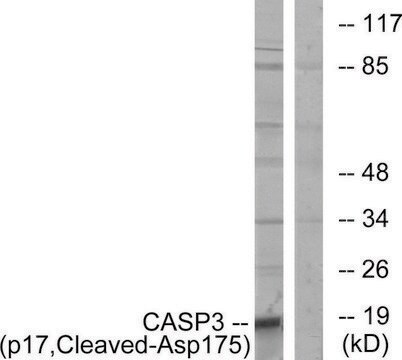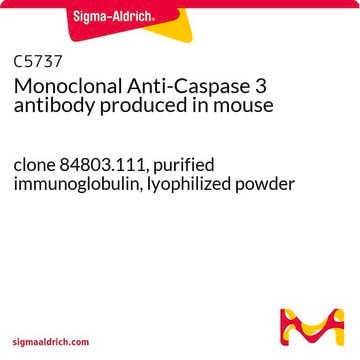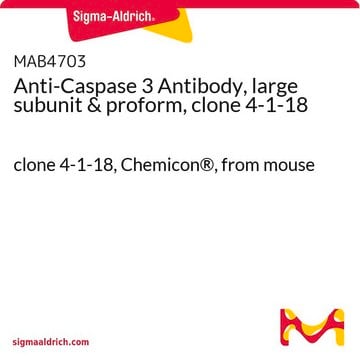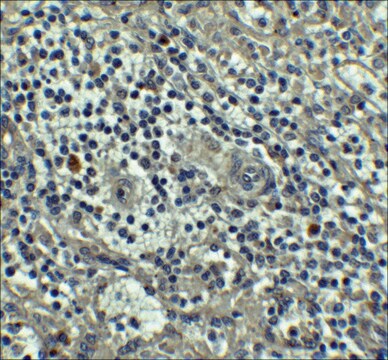C8487
Anti-Caspase 3, Active antibody produced in rabbit
IgG fraction of antiserum, buffered aqueous solution
Synonyme(s) :
Activated Caspase 3 Antibody, Activated Caspase 3 Antibody - Anti-Caspase 3, Active antibody produced in rabbit, Anti-Apopain, Anti-CPP32, Anti-Yama
About This Item
Produits recommandés
Source biologique
rabbit
Niveau de qualité
Conjugué
unconjugated
Forme d'anticorps
IgG fraction of antiserum
Type de produit anticorps
primary antibodies
Clone
polyclonal
Forme
buffered aqueous solution
Espèces réactives
rat, bovine, human, pig, canine, mouse
Conditionnement
antibody small pack of 25 μL
Technique(s)
indirect immunofluorescence: 1:1,000 using human epitheloid carcinoma HeLa cell line, treated with staurosporine
microarray: suitable
western blot: 1:500 using recombinant human caspase 3, active (Sigma Product No. C1224)
Numéro d'accès UniProt
Conditions d'expédition
dry ice
Température de stockage
−20°C
Modification post-traductionnelle de la cible
unmodified
Informations sur le gène
human ... CASP3(836)
mouse ... Casp3(12367)
rat ... Casp3(25402)
Catégories apparentées
Description générale
Immunogène
Application
- for western blotting of cytochrome c for caspase activation
- as primary antibody in immunofluorescence staining of embryos and postnatal mice cryosections
- in Western blot analysis of activated caspase 3
- as a primary antibody in immunodetection of rat brain sections
Actions biochimiques/physiologiques
Forme physique
Stockage et stabilité
Clause de non-responsabilité
Not finding the right product?
Try our Outil de sélection de produits.
En option
Code de la classe de stockage
12 - Non Combustible Liquids
Classe de danger pour l'eau (WGK)
nwg
Point d'éclair (°F)
Not applicable
Point d'éclair (°C)
Not applicable
Certificats d'analyse (COA)
Recherchez un Certificats d'analyse (COA) en saisissant le numéro de lot du produit. Les numéros de lot figurent sur l'étiquette du produit après les mots "Lot" ou "Batch".
Déjà en possession de ce produit ?
Retrouvez la documentation relative aux produits que vous avez récemment achetés dans la Bibliothèque de documents.
Les clients ont également consulté
Notre équipe de scientifiques dispose d'une expérience dans tous les secteurs de la recherche, notamment en sciences de la vie, science des matériaux, synthèse chimique, chromatographie, analyse et dans de nombreux autres domaines..
Contacter notre Service technique















